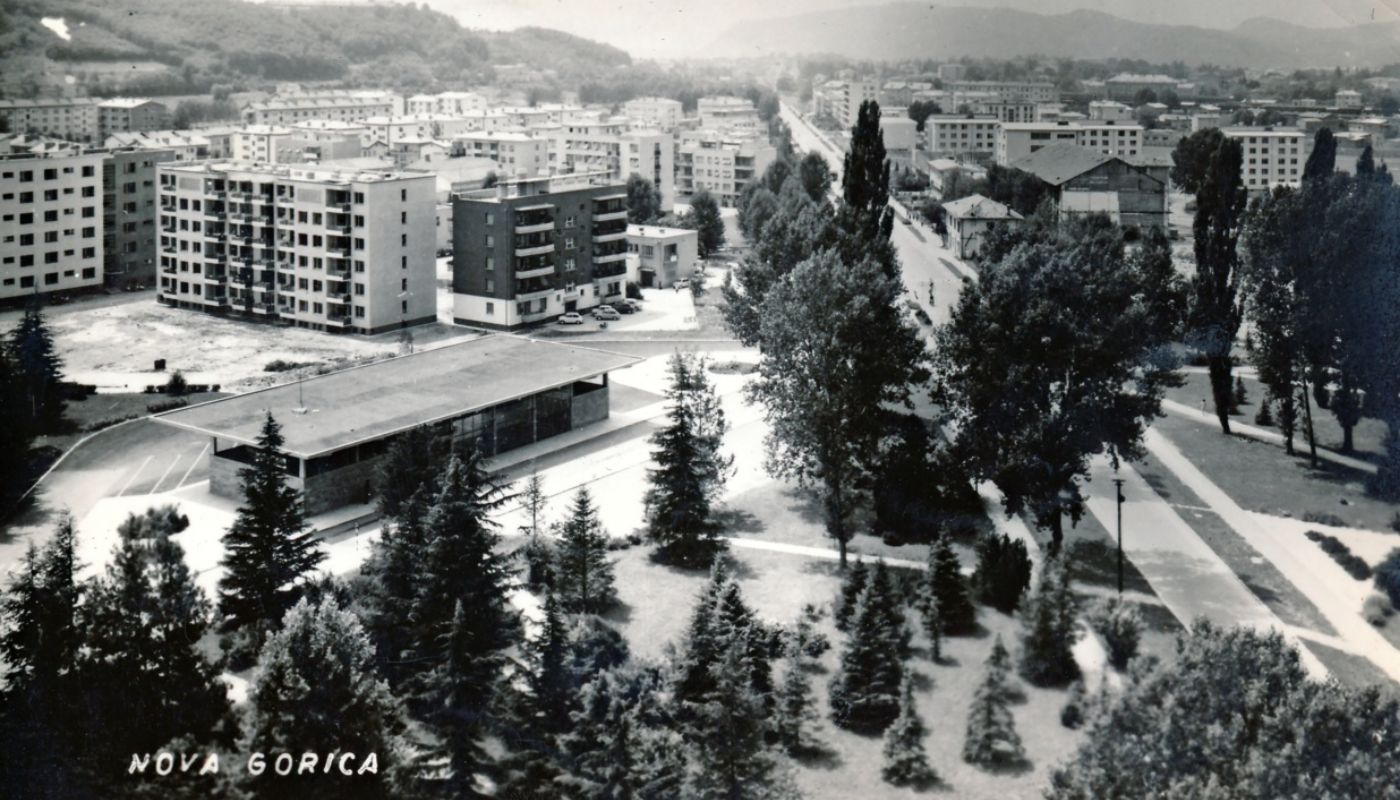
“MI GRADIMO SOCIALIZEM”: THE STORY OF THE BIRTH OF NOVA GORICA
by ELIA GOMŠČEK
Even today, some Gorizia residents and many foreigners see the cities of Gorizia and Nova Gorica as the Italian-Slovenian version of West Berlin and East Berlin, that is, a single city that was divided by the two blocks of the twentieth century. The western zone assigned to the capitalist bloc and the eastern zone to the socialist bloc. But this is not the case, or rather, there are certainly similarities between the German capital and the “two Gorizias”, but they are much less than one might think.
The narrative of the “city divided in two” can be dismantled simply by the fact that Nova Gorica was born only after the Second World War and the signing of the Paris peace treaties of 1947 that divided these territories between the Italian Republic and the Socialist Federal Republic of Yugoslavia. So Gorizia and Nova Gorica were never divided, rather we can say that a part of the Gorizia hinterland was separated from the city center. The settlements of Solkan, Šempeter, Vrtojba and Miren were divided from one day to the next by their administrative centre. It is no coincidence that Šempeter still has the name “pri Gorici” (of Gorizia), given its territorial continuity with Gorizia, but which it does not have with Nova Gorica, which is instead located on the other side of the Panovec forest.
It must be said that some small parts of the city of Gorizia were actually separated by the border, for example the northern station, today the station of Nova Gorica, the Kostanjevica, where the monastery of the same name stands, the Rafut, Pristava (Prestava) and Rožna Dolina (Valdirose), where we can still find the cemetery of the Gorizia Jews today. Therefore, apart from these few areas, almost all of Gorizia was assigned to Italy by imposing a rigid border with the satellite towns of Solkan, Šempeter and Miren, which previously always referred to Gorizia and from one day to the next found themselves close to an “impassable” border and isolated from all the others.
In the immediate post-war period, the nearest town on their side of the border became Ajdovščina (Aidussina), almost 30 km away. It is clear that these countries needed a new urban center that would guarantee them the services left across the border, such as a hospital, a courthouse, a large library, shops, etc. From this need comes the idea of the foundation of Nova Gorica. A city that could not only meet these needs, but could also be a model of urban planning and socialist society for Slovenia, the entire Federation and above all for the “capitalist neighbors”. The most emblematic sign of this desire to be a model is the red star positioned at the top of the Transalpina station with the inscription in large letters “mi gradimo socializem”, or “we are building socialism”.
The area dedicated to the construction of the new city was not decided immediately. Among the proposals were the extensions of Ajdovščina, Tolmin, Rožna Dolina and Ajševica, which were almost immediately liquidated. The two most popular proposals were the fields south of Solkan and the area between Šempeter and Vrtojba. Many factors were evaluated including the population, the strategic-military position, the quality of the land, the wind etc. The northern option prevailed, between Solkan, Grčna, Panovec and the northern station.
For the Yugoslav leadership it was an opportunity to be able to plan a city from scratch to fit the new socialist society that was taking shape and the opportunity to be able to show it off before the eyes of the capitalist world. The construction of Nova Gorica was therefore not only a practical response to the isolation of the Slovenian villages cut off from Gorizia, but soon also became a political-ideological project of great symbolic value. The new settlement was to embody the principles of socialist urbanism and reflect the modernity, efficiency and equality promoted by the Yugoslav system. The entire planning of the city was oriented towards the creation of a functional, collective and ideologically congruous space: wide avenues, green spaces, open squares, monumental public buildings and residential neighborhoods designed for community life. The architect Edvard Ravnikar, a central figure in the initial design, tried to combine models of European modernism with local needs. Nova Gorica presented itself as an urban laboratory, built by youth brigades from every corner of Yugoslavia, embodying the ideal of unity and cooperation between the federated republics. Each stone laid was not only building material, but also represented a political act, a declaration of existence and self-determination in the face of the border, history and the world. Nova Gorica was not just a new city, but a reinforced concrete manifesto of an era.
Shortly after the start of the construction sites, economic resources began to run out and local interests took over, so that very little of Ravnikar’s original plan was realized and the architect himself bluntly called it a tragedy. The central government’s focus shifted to other projects, and responsibility shifted to local authorities.
78 years after its foundation, we can serenely say that everything did not go according to plan, but I would not dare to say that it is a failure or a tragedy either. Although they were not born as a single city, today Nova Gorica and Gorizia, together with Šempeter, function as a single large city where their inhabitants, regardless of language and citizenship, move freely within this space.
La lingua originale di questo articolo è l'Italiano.

